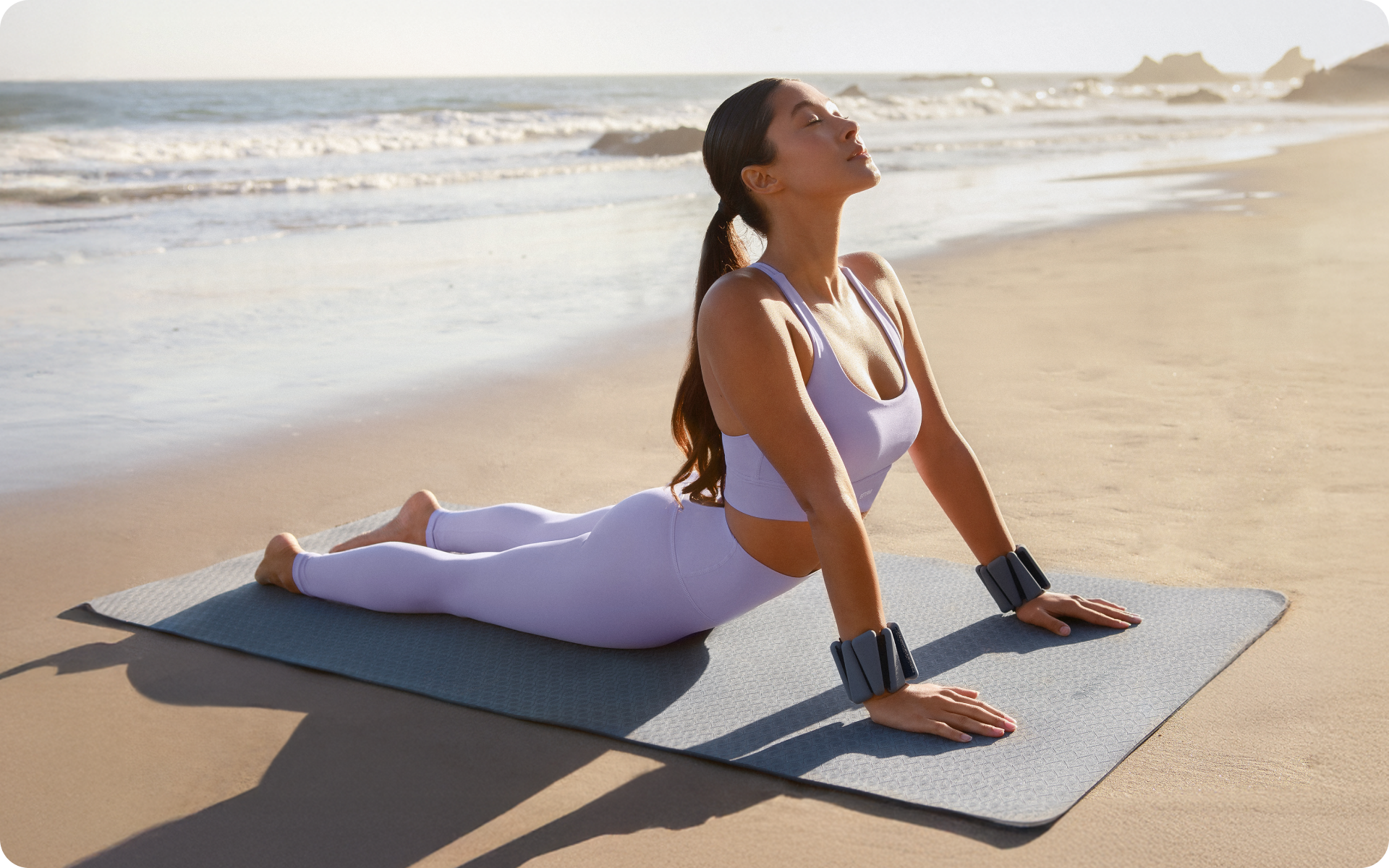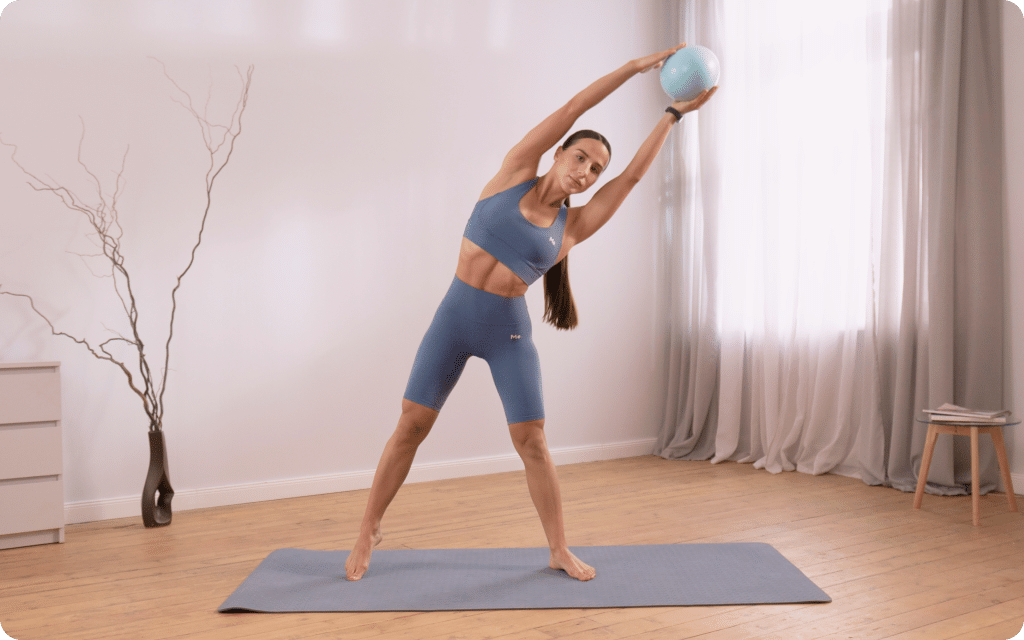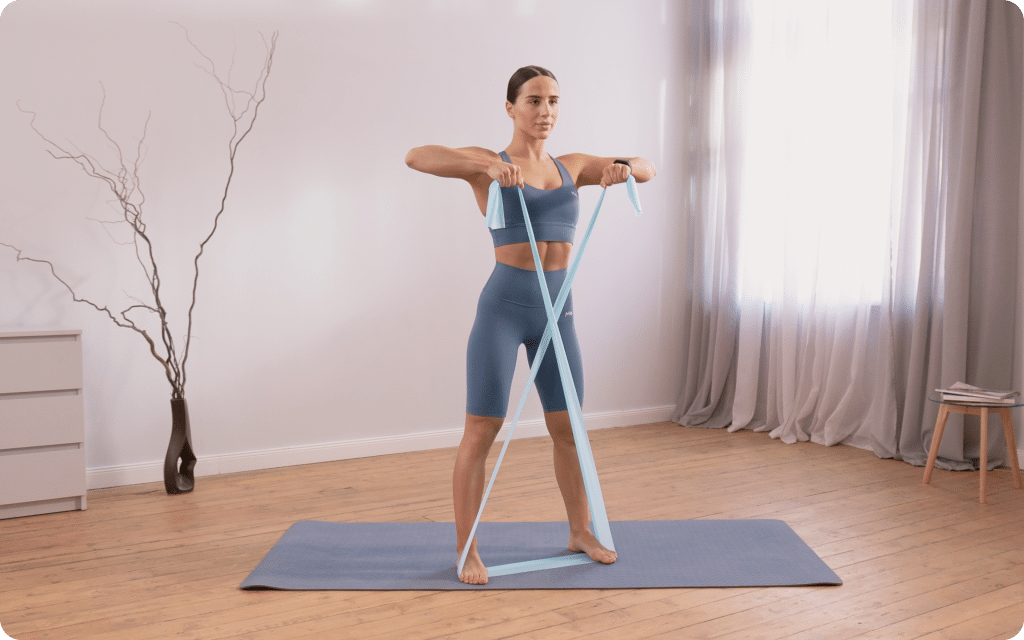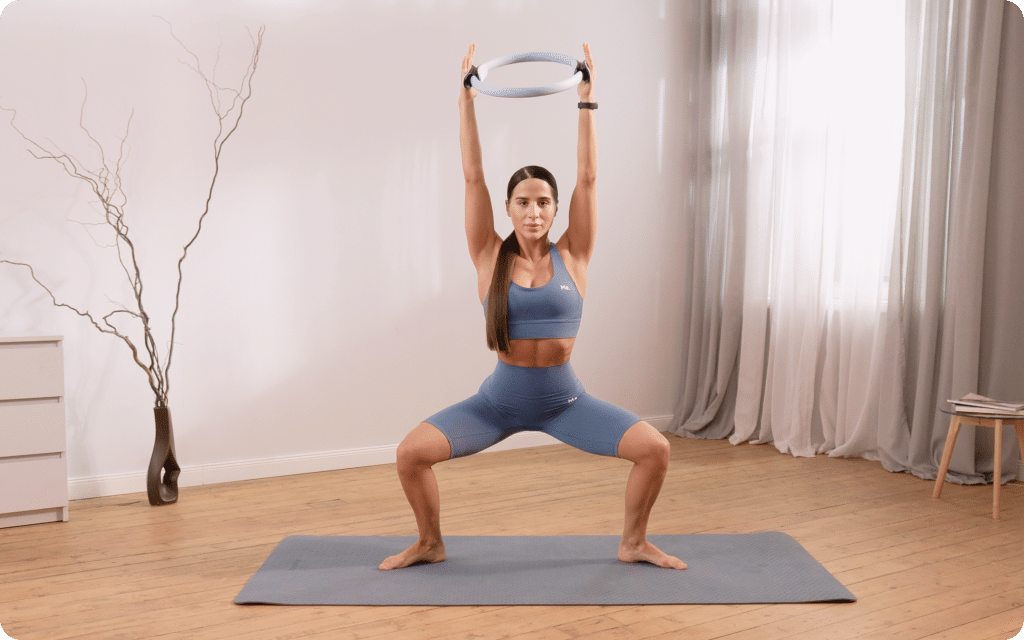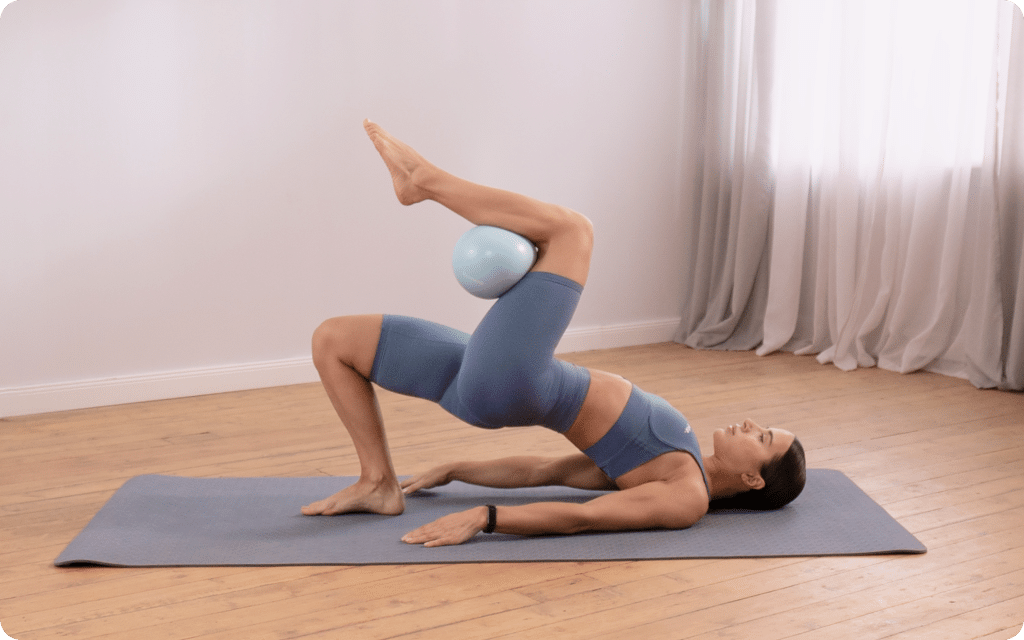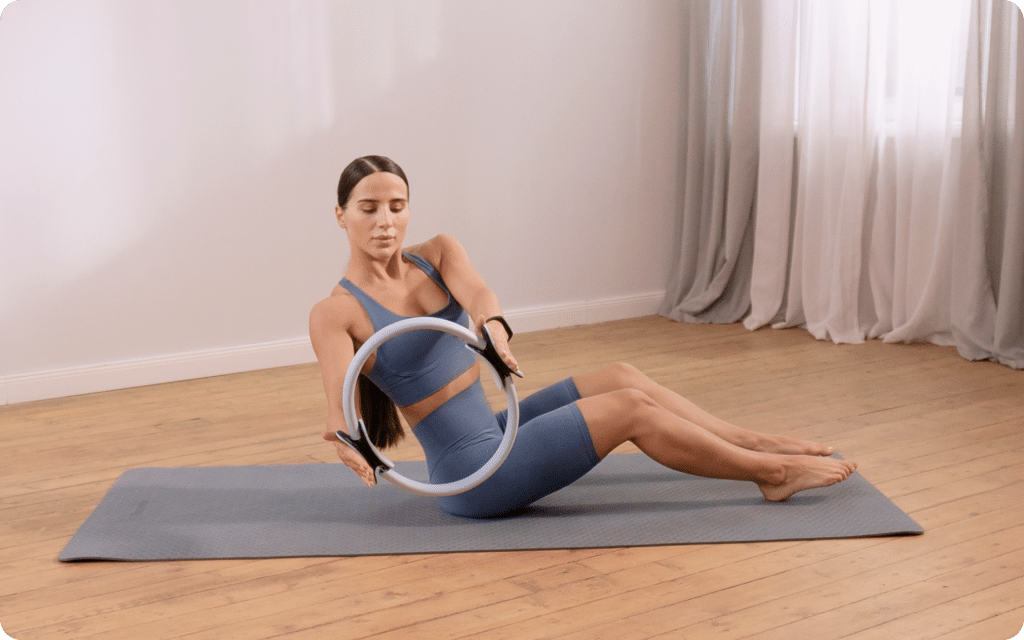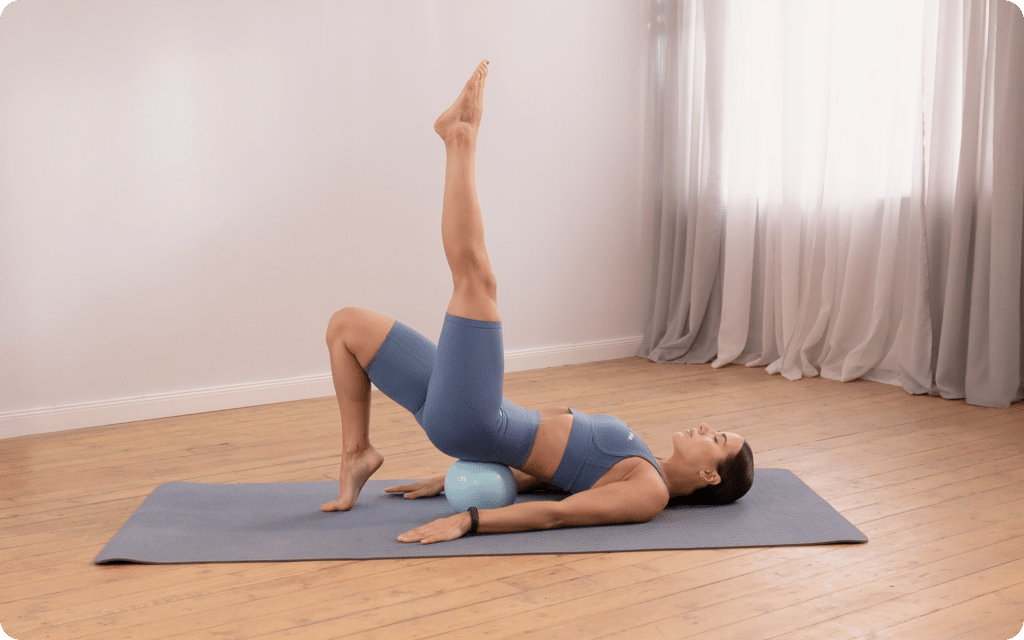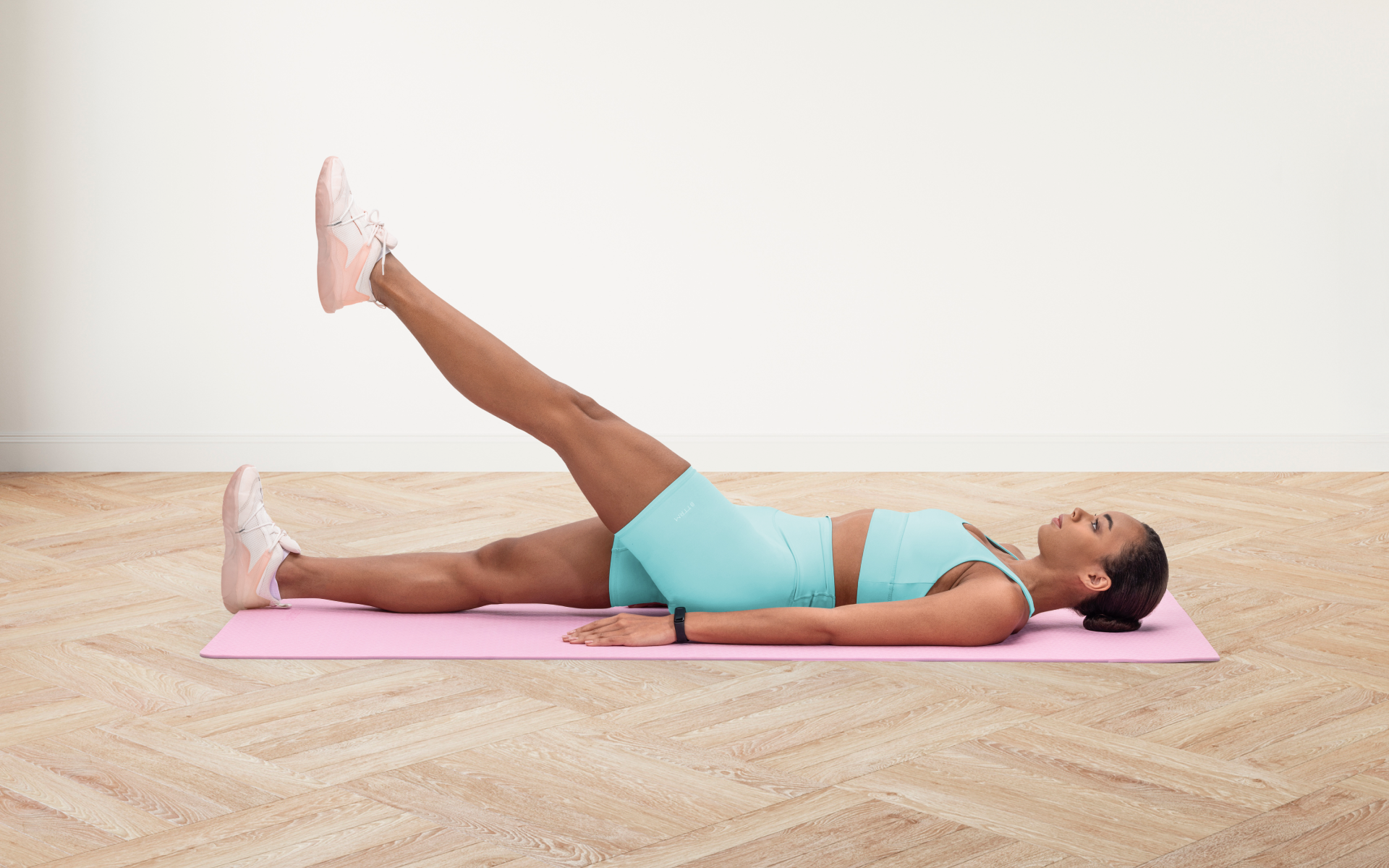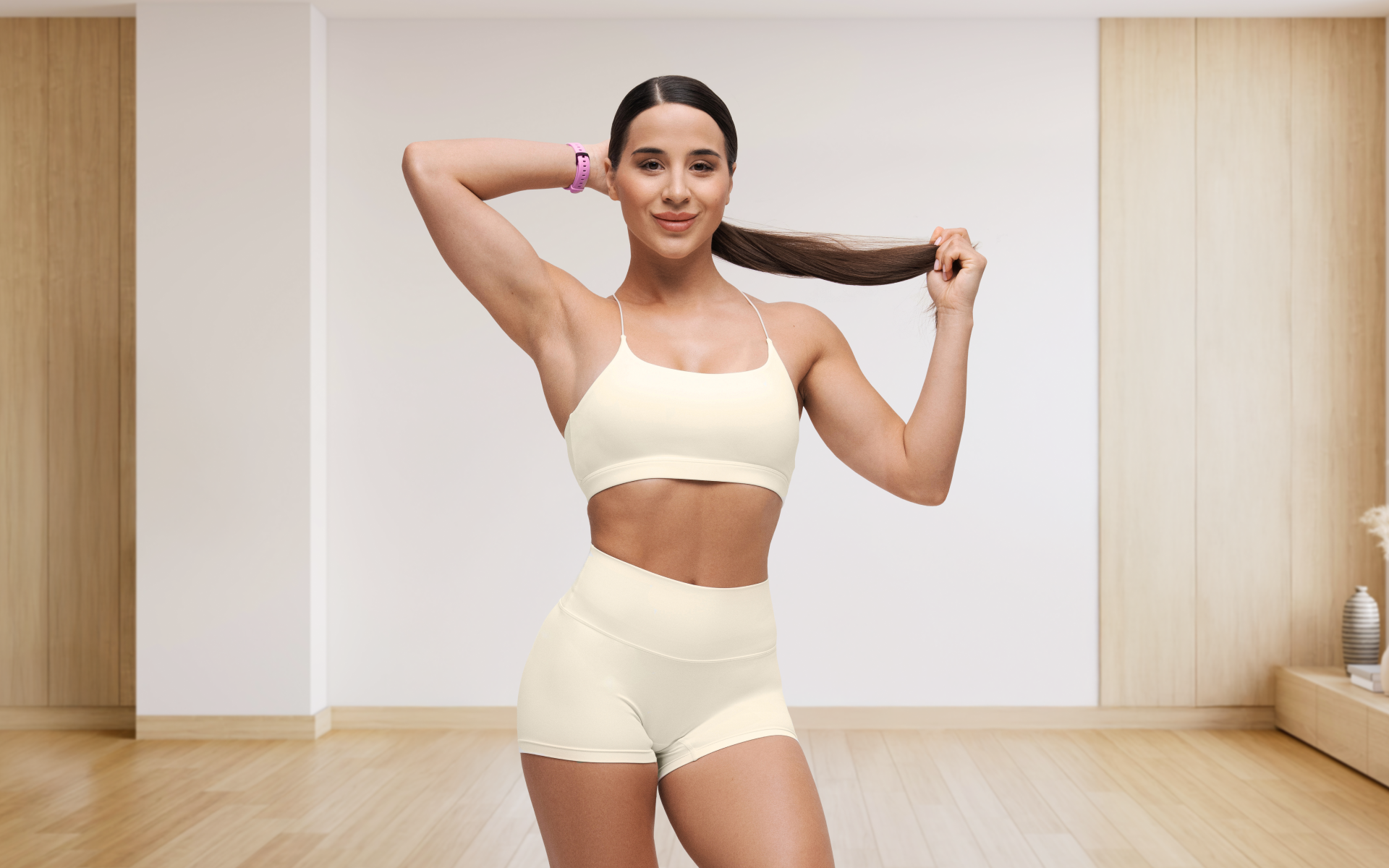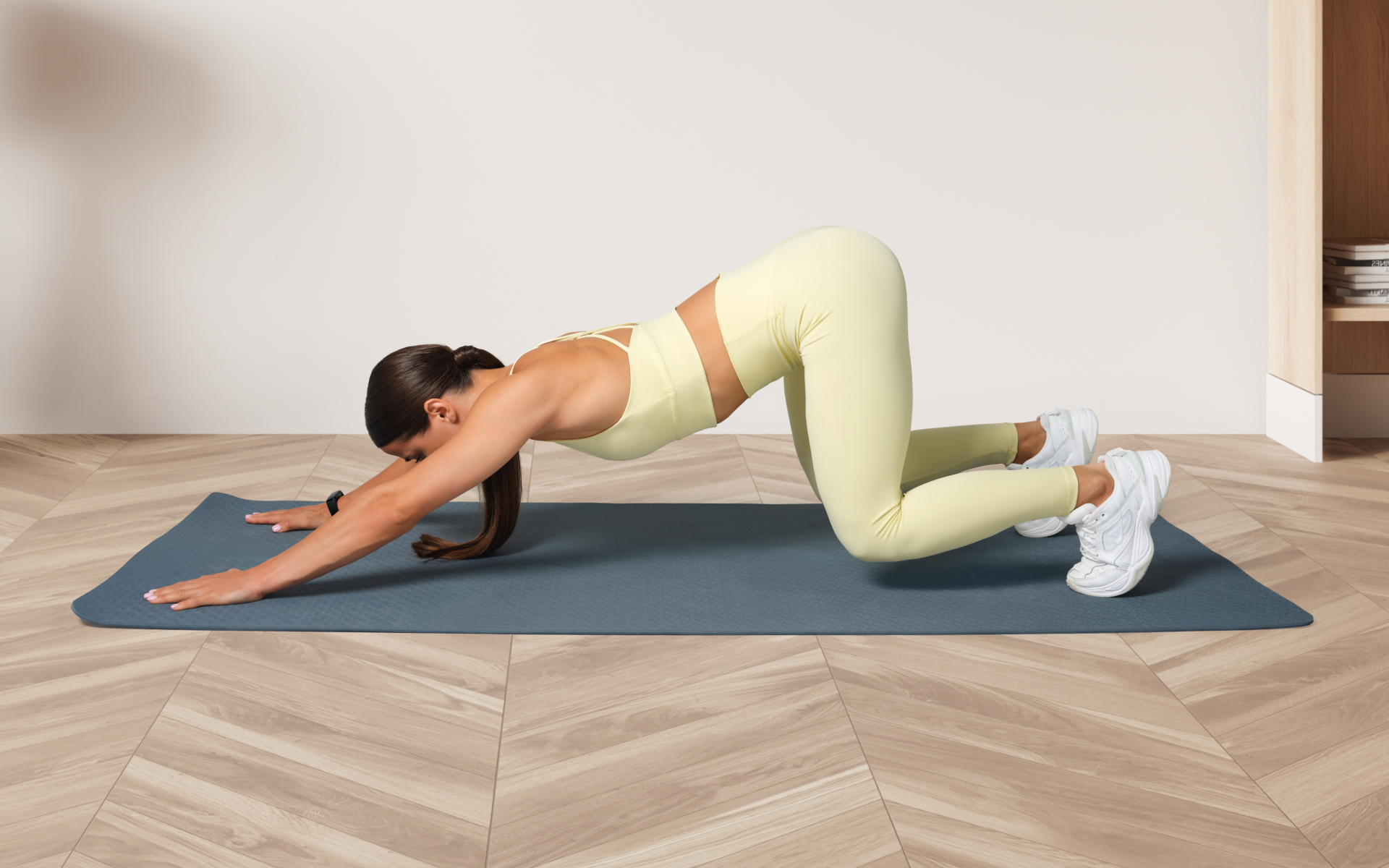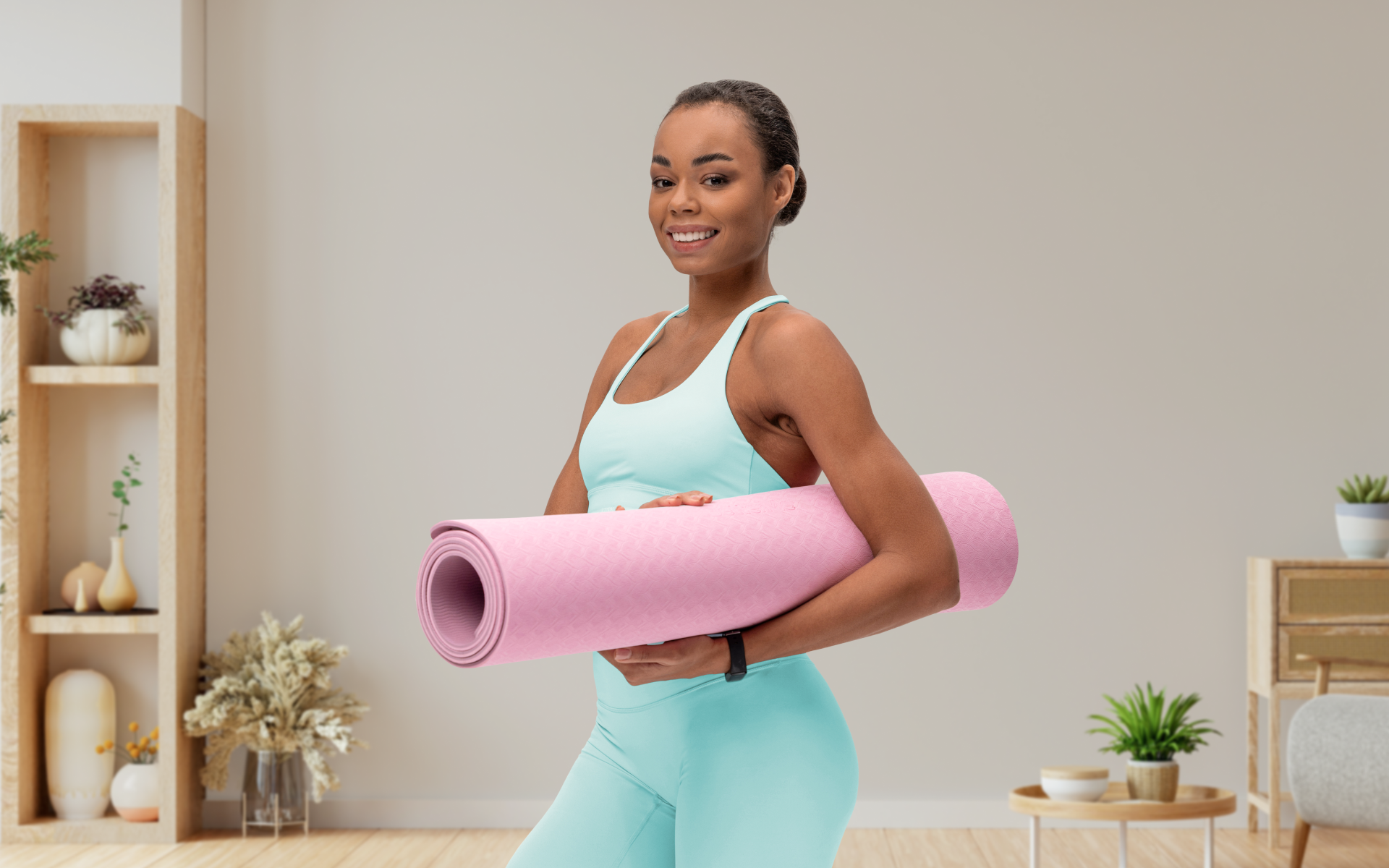Life’s demands have many of us stuck in chairs and staring at screens for hours. Over time, a sedentary lifestyle can result in tight muscles, stiff joints, and a loss of functional strength. Add to that the decline in mobility and muscle mass that naturally occurs with age, and you’ve got a recipe for discomfort and setbacks.
Pilates is a form of exercise that’s gentle enough for almost anyone, yet remarkably effective at addressing these challenges. Rooted in controlled movements, core engagement, and mindful breathing, Pilates helps improve how your body moves and feels (1).
Here are 8 proven benefits of Pilates that make it such a valuable form of exercise:
What Are the Main Health Benefits of Pilates?
1. Improves Core Strength
Pilates is well-known for targeting the core, which includes the deep muscles in the abdomen, back, and pelvis. These muscles form the foundation of almost every movement you make, providing support, stability, and power (2, 3).
Regular practice strengthens deep stabilizers, such as the transverse abdominis and multifidus, which are essential for maintaining spinal alignment and protecting your lower back. Unlike traditional crunches that emphasize surface-level muscles, Pilates works these inner core muscles through controlled, functional movements (1). For more details about benefits of pilates workout, take a look at our prior publication.
2. Enhances Posture
Spending hours sitting or slouching can cause imbalances in the muscles that support your spine. Over time, this affects your posture and can lead to pain and discomfort (4).
Pilates helps realign and strengthen the postural muscles, including the erector spinae, glutes, and rhomboids. By building awareness and control over these stabilizing muscles, Pilates promotes a neutral spine position (5). A stronger, more properly aligned posture reduces strain on joints and enhances your overall movement efficiency.
3. Reduces Back Pain
Lower-back pain is often linked to weak core muscles and poor spinal alignment. Pilates addresses both issues through exercises that stabilize the pelvis and strengthen the muscles that support the lumbar region. Movements such as pelvic tilts or spine articulations improve joint mobility and work to distribute the load evenly across the spine. Research has shown that Pilates can significantly reduce chronic back pain by improving movement mechanics and reinforcing core strength (6).
BetterMe: Health Coaching app helps you achieve your body goals with ease and efficiency by helping to choose proper meal plans and effective workouts. Start using our app and you will see good results in a short time.
4. Boosts Flexibility and Mobility
Flexibility relates to the length of your muscles, while mobility focuses on joint movement. Pilates emphasizes both. Controlled stretching in Pilates lengthens tight muscles such as the hamstrings or hip flexors and promotes joint health by moving through full ranges of motion (7). Exercises, such as leg stretches on the reformer, encourage dynamic mobility without overstretching or compromising joint stability. This dual focus results in more fluid, pain-free movement patterns.
5. Increases Body Awareness
Body awareness, or proprioception, is your ability to sense the position of your body in space (8).
Pilates develops this through mindful, deliberate movements and a focus on neuro-muscular engagement (9). You’re taught to pay attention to how your body feels during each exercise, which enhances motor control and movement precision.
Improved body awareness not only makes your workouts more effective but also reduces the risk of injuries in daily life (10).
6. Decreases Stress
Pilates bridges the gap between physical exercise and mindfulness. The incorporation of controlled breathing and focused movement offers a meditative element (11).
Deep breathing, practiced in Pilates, activates the parasympathetic nervous system, which calms the body and reduces stress hormones such as cortisol (12). This creates a mental reset, which leaves you feeling more relaxed and focused after each session.
7. Improves Balance and Coordination
Pilates challenges your balance and coordination by engaging stabilizer muscles during complex movements. Exercises often combine static holds with controlled, dynamic transitions.
By working smaller muscle groups, such as those in your feet and ankles, together with larger muscle chains, Pilates enhances your ability to maintain balance. Improved core strength further supports stability, which reduces your risk of falls and improves your coordination skills (13).
8. Supports Bone Health
Weight-bearing exercises in Pilates stimulate bone remodeling, an essential process for maintaining healthy bone density (14). Movements that require you to work against gravity or resistance, such as planks or reformer leg presses, place stress on the bones in a controlled way. This is particularly beneficial for older adults or those who are at risk of osteoporosis.
By safely improving bone strength, Pilates supports long-term skeletal health without the high impact of traditional strength training.
Read more: 5 Advanced Wall Pilates Moves to Try at Home
Can You Lose Weight Doing Pilates?
You can lose weight doing Pilates, but not in the way you might think.
To be clear, Pilates isn’t a high-calorie-burning activity. A standard session may burn around 175-250 calories, depending on factors such as intensity, session length, and individual body weight. This number is relatively low compared to activities such as running, cycling, or high-intensity interval training (HIIT).
However, Pilates isn’t competing to be a calorie-burning powerhouse. Instead, it complements other activities by improving strength, mobility, and neuromuscular coordination, which can enhance performance in higher-energy exercises.
Plainly put, Pilates plays an indirect yet essential role in supporting sustainable weight management by improving how your body moves, feels, and functions.
Muscle Engagement and Energy Expenditure
Pilates strengthens your muscles, particularly the core, which includes deep stabilizers such as the transverse abdominis and multifidus (1). When these muscles are more active and engaged, your overall movement becomes more efficient.
While Pilates itself burns a moderate number of calories during a typical session, the increase in muscle engagement can boost your daily energy expenditure. More efficient and coordinated muscles mean you use energy more effectively throughout the day.
Better Posture and Alignment
Poor posture can reduce how effectively your body moves, often resulting in imbalances and inefficient muscle use. Over time, this affects your energy output, even in basic daily tasks.
Pilates addresses postural alignment by strengthening muscles such as the erector spinae, glutes, and rhomboids, which play a role in stabilizing your spine (5). By improving posture and balance, Pilates can help you expend energy more effortlessly and avoid compensatory movements that waste effort.
Stress Management and Its Impact on Weight
Stress is one of the most overlooked contributors to weight gain, particularly abdominal fat. Chronic stress elevates cortisol, a hormone linked to fat storage, particularly around the midsection (15).
Pilates integrates controlled breathing and mindfulness, which stimulate the parasympathetic nervous system (the body’s “rest and digest” mode). This helps reduce cortisol levels and promotes a sense of calm (16).
A more focused and relaxed mind may reduce stress-induced cravings or emotional eating, indirectly supporting weight management (17).
Supporting Weight Loss Through Lifestyle Changes
What Pilates does best is lay the foundation for a healthy, functional body. It improves flexibility, builds strength, and raises your awareness of how your body feels and moves (18). This often translates into better decisions in other areas of life, such as staying more active, choosing nutrient-dense foods, and recovering properly.
For example, someone who feels stronger and more balanced from Pilates may feel encouraged to incorporate additional cardio or strength training into their routine. If you’re curious about 10 benefits of pilates, check out our earlier article.
Does Pilates Change Your Body Type?
Pilates won’t “change” your inherent body type. For example, if you’re naturally pear-shaped, you won’t suddenly develop an athletic silhouette or vice versa.
Body type refers to your overall structure and is largely determined by genetics (19). Factors like bone structure, height, and where you naturally store fat are beyond the influence of any exercise program.
However, with consistent practice, you’ll notice a more toned, balanced, and aligned version of your current body. Pilates doesn’t override genetics, but it does improve how your body functions and performs. Over time, this can help you feel stronger, move with more ease, and project confidence in your physical presence.
Whether you’re a workout beast or just a beginner making your first foray into the world of fitness and dieting – BetterMe has a lot to offer to both newbies and experts! Install the app and experience the versatility first-hand!
How Often Should You Do Pilates to See Benefits?
Joseph Pilates, the founder of the method, famously recommended practicing Pilates at least three times a week to experience its full benefits. He believed that consistent practice was the key to building strength, flexibility, and overall body control. His advice is closely aligned with modern fitness guidelines, which emphasize regular physical activity for maintaining health and wellness (20).
The World Health Organization (WHO) and other health bodies recommend at least 150-300 minutes of moderate-intensity aerobic activity per week for adults, together with muscle-strengthening activities on two or more days (21).
While Pilates may not fall strictly under aerobic activity unless performed vigorously, it’s a highly effective muscle-strengthening exercise. Regularly practicing Pilates can help meet these movement benchmarks, particularly the strength-focused component.
As with other forms of exercise, consistency in Pilates is essential if you are to see and feel improvements. Practicing two to three times per week allows your body to adapt and strengthen over time. Whether your goal is to enhance posture, build core strength, or improve flexibility, regular sessions ensure steady progress and minimize the risk of stagnation.
If three sessions a week feel overwhelming, particularly for beginners, starting with one or two can still yield benefits. The most important aspect is building a sustainable routine that works with your lifestyle. Once you’re comfortable, you can gradually add more sessions to maximize the results.
- Beginners: Aim for 1-2 sessions per week as you learn the techniques and gain body awareness. Complement these with light cardio or gentle stretches on other days.
- Intermediate to Advanced: Commit to 2-4 sessions per week, varying between mat and equipment-based Pilates if available. Consider integrating Pilates with other activities such as cardio or strength training for a balanced routine.
- Time-Pressed Individuals: Even a 10-15 minute session is better than skipping working out entirely. Consistency matters just as much as duration when building a habit.
Read more: Pilates Resistance Bands Exercises
Can You Get a Good Body Just from Pilates?
What constitutes a “good body” is subjective and varies from person to person. Your genetic predispositions, such as body type and muscle definition, heavily influence how Pilates will shape your physique. For example, a naturally tall and skinny person may benefit from Pilates’ toning effects but may need additional strength training for fuller muscle definition.
That being said, Pilates offers numerous benefits for improving how your body looks, feels, and moves.
It can:
- Sculpt and strengthen muscles – resulting in a toned physique.
- Improve posture and alignment – by strengthening postural muscles, Pilates can help correct imbalances and improve overall posture.
- Increase flexibility and range of motion – by incorporating stretching exercises, Pilates can help increase your body’s flexibility and range of motion, which can improve physical performance and prevent injuries.
- Promote relaxation and reduce stress – when combined with controlled breathing techniques, the mindful movements in Pilates can have a calming effect on the mind and body, which reduces stress levels.
- Help with weight loss – while Pilates alone may not lead to significant weight loss, it can complement a healthy diet and cardio routine to help shed excess pounds (22). The core-strengthening and muscle-toning exercises in Pilates can also improve overall body composition.
Pilates can help you build a strong, toned, and functional body by improving muscle tone, posture, flexibility, and core strength. However, achieving a “good body” often depends on individual goals, genetics, diet, and overall lifestyle. For specific objectives such as muscle mass or cardiovascular endurance, combining Pilates with other exercises is more effective. Pilates and gym workouts serve different purposes, so neither is inherently better. Pilates focuses on core strength, flexibility, posture, and functional movement. Depending on the routine, gym workouts may emphasize cardio, muscle hypertrophy, or strength. The better option depends on your personal fitness goals and preferences. Our previous post goes into great detail about the benefits of pilates for men. Pilates is suitable for all ages, from children to seniors. Its low-impact nature and emphasis on controlled movements make it adaptable for different fitness levels and life stages. Younger individuals can benefit from gaining strength and flexibility, while older adults often see improvements in mobility, posture, and balance. Yes, 20 minutes of Pilates a day can be beneficial, particularly for building consistency and reaping core strength, flexibility, and posture improvements. For more noticeable results in overall fitness or physique, longer sessions or additional forms of exercise may be required. Small daily practices are still valuable for progress.Frequently Asked Questions
Can you get a good body just from Pilates?
Is Pilates better than the gym?
What is the best age for Pilates?
Is 20 minutes of Pilates a day enough?
The Bottom Line
Pilates offers a wealth of health benefits, from improved core strength and muscle tone to better posture, flexibility, and overall movement efficiency. It’s not just about how your body looks, but also how it feels and functions in daily life. Beyond the physical gains, the focus and mindfulness involved in Pilates can significantly boost mental well-being, which makes it a holistic approach to fitness.
DISCLAIMER:
This article is intended for general informational purposes only and does not serve to address individual circumstances. It is not a substitute for professional advice or help and should not be relied on for making any kind of decision-making. Any action taken as a direct or indirect result of the information in this article is entirely at your own risk and is your sole responsibility.
BetterMe, its content staff, and its medical advisors accept no responsibility for inaccuracies, errors, misstatements, inconsistencies, or omissions and specifically disclaim any liability, loss or risk, personal, professional or otherwise, which may be incurred as a consequence, directly or indirectly, of the use and/or application of any content.
You should always seek the advice of your physician or other qualified health provider with any questions you may have regarding a medical condition or your specific situation. Never disregard professional medical advice or delay seeking it because of BetterMe content. If you suspect or think you may have a medical emergency, call your doctor.
SOURCES:
- Pilates: how does it work and who needs it? (2011, ncbi.nlm.nih.gov)
- Anatomy, Abdomen and Pelvis: Abdominal Wall (2023, ncbi.nlm.nih.gov)
- Core strengthening (2004, archives-pmr.org)
- Spine Health: Posture and Workplace Ergonomics (2024, spinehealth.org)
- Effects of Pilates on Body Posture: A Systematic Review (2024, sciencedirect.com)
- Effects of pilates on patients with chronic non-specific low back pain: a systematic review (2016, ncbi.nlm.nih.gov)
- Effects of Pilates Training on Lumbo-Pelvic Stability and Flexibility (2011, ncbi.nlm.nih.gov)
- Proprioception: a new look at an old concept (2024, 2022, journals.physiology.org)
- An online pilates exercise program is effective on proprioception and core muscle endurance in a randomized controlled trial (2022, pubmed.ncbi.nlm.nih.gov)
- Effects of proprioceptive training on sports performance: a systematic review (2024, ncbi.nlm.nih.gov)
- Pilates, Mindfulness and Somatic Education (2013, ncbi.nlm.nih.gov)
- Effect of breathwork on stress and mental health: A meta-analysis of randomised-controlled trials (2023, nature.com)
- Pilates for Improvement of Muscle Endurance, Flexibility, Balance, and Posture (2010, journals.lww.com)
- Effectiveness of Pilates and Yoga to improve bone density in adult women: A systematic review and meta-analysis (2021, ncbi.nlm.nih.gov)
- Obesity and Stress: A Contingent Paralysis (2022, ncbi.nlm.nih.gov)
- Breath of Life: The Respiratory Vagal Stimulation Model of Contemplative Activity (2018, ncbi.nlm.nih.gov)
- Stress-induced eating and the relaxation response as a potential antidote: A review and hypothesis (2017, sciencedirect.com)
- Physical and psychological benefits of once-a-week Pilates exercises in young sedentary women: A 10-week longitudinal study (2016, sciencedirect.com)
- Body Types – Mesomorph, Ectomorphs & Endomorphs Explained (n.d., nasm.org)
- PILATES EXERCISES, TYPES, AND ITS IMPORTANCE: AN OVERVIEW (2023, researchgate.net)
- Physical activity (n.d., who.int)
- Weight loss – a healthy approach (2024, betterhealth.vic.gov.au)
